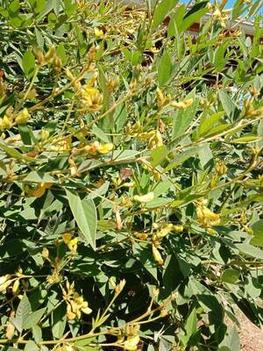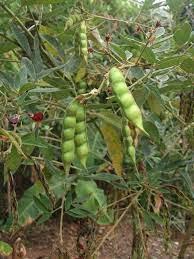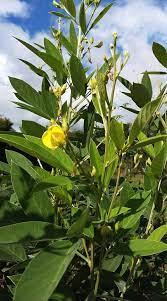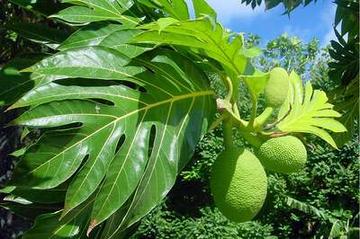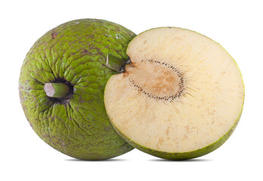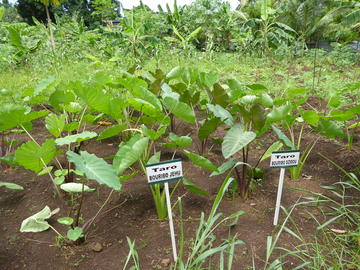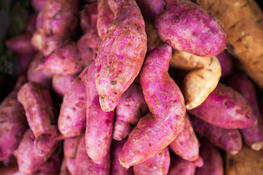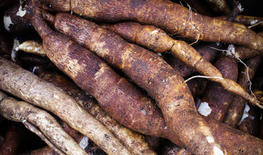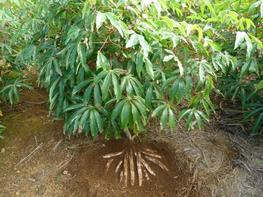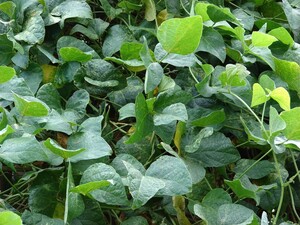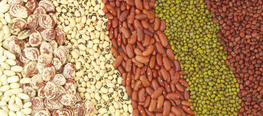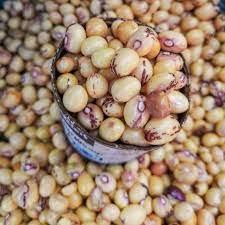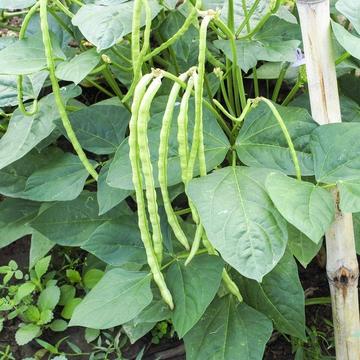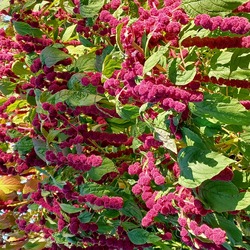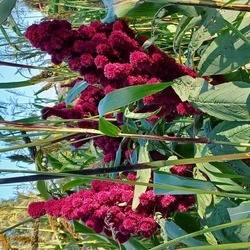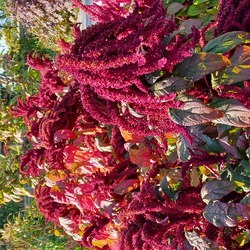Agrobiodiversity through some examples of sometimes neglected "treasures"
Last update: 31 January 2024
Contents
The Ambrevade : a food and biological treasure
The breadfruit tree : more than a fruit !
Roots and tubers : underground treasures
Tasty and sustainable, traditionnal legumes, pillars of nutrition
Amaranth, a plant of multiple facets
The Ambrevade: a food and biological treasure of the Indian Ocean
The ambrevade, also known as pigeon pea (Cajanus cajan), is a legume from the Fabaceae family. This perennial plant has creeping or climbing stems and bears pods containing seeds of varying colours, from white to black, red, and brown.
Originally from India, the ambrevade has adapted to a variety of climatic conditions. It prefers tropical and subtropical regions with temperatures between 20°C and 30°C. Although it tolerates drought, regular rainfall is necessary for optimal growth. The ambrevade plant is not demanding when it comes to soil. It can grow in poor soils but prefers well-drained soils that are slightly acidic to neutral.
Today, it is a staple food in the Indian Ocean, providing a significant source of protein and essential amino acids. It is notably cultivated and consumed in Madagascar (where it is called 'amberivatry'), in the Comoros (where it is known as 'ntsuzi'), and also in Réunion and Mauritius.
Its ability to enrich the soil with nitrogen through symbiotic nitrogen fixation makes it an interesting service plant.
|
|
|
|
The Breadfruit Tree, more than a fruit!
Originally from the Pacific region, the breadfruit tree (Artocarpus altilis) is a symbol of resilience and adaptability in the Indian Ocean.
It can grow up to 20 meters tall and has deep green leaves that can measure up to 90 cm long. The tree thrives in humid tropical climates with temperatures ranging from 21 to 32°C and regular rainfall. It can adapt to a variety of soils but prefers well-drained, slightly acidic to neutral soils. Soils rich in organic matter are especially beneficial for the breadfruit tree.
Its fruit, which is high in carbohydrates and low in lipids, is an essential source of nutrition for local populations. The breadfruit tree is highly valued in several countries in the Indian Ocean, including Madagascar, Réunion, Seychelles, and Mauritius, where it is consumed boiled, fried, or transformed, and can also be used in desserts or drinks.
The breadfruit tree plays a crucial role in the economy of several countries in the Indian Ocean. The cultivation of this fruit provides many farmers with a stable income through the sale of fruits and derived products. Processing the fruit into chips, purees, jams, and drinks creates jobs in distribution and sales, making it a unique marker of our territories and gardens.
|
|
|
Roots and tubers, underground treasures
In the Indian Ocean, cassava, yam, taro, and sweet potato are more than just simple foods. They are essential to local economies, food security, and culinary traditions. Let's explore why they are so important to the region.
Cassava is predominant in Madagascar and the Comoros, and it can adapt to less fertile soils. Its transformation into derived products, such as cassava flour, generates significant revenue and stimulates local industries.
Yam and taro play a crucial role in crop rotation, helping to prevent soil erosion and maintain soil health. Additionally, they provide a stable source of income for farmers due to their constant demand in local and international markets.Yam and taro are important crops in Madagascar, Mauritius, Réunion, and the Seychelles. Taro is grown in wetter areas and is a source of income for rural communities, as both the leaves and tubers are consumed, offering various market opportunities.
Sweet potato is a popular food and cash crop in Mauritius and Madagascar due to its ease of cultivation and resistance to diseases, resulting in abundant production with minimal inputs.
|
|
| |
|
|
|
These crops have a significant economic impact, driving job creation not only in agriculture but also in food processing, transportation, and retail sectors. They form robust value chains that feed and support millions of people.
Tasty and sustainable, traditional legumes, pillars of nutrition
In the southwest of the Indian Ocean, an area abundant in agrobiodiversity, traditional legumes such as peas, beans, and lentils play a crucial role in the diet of local populations as well as the economy.
|
|
|
|
|
|
In Madagascar, the Voanjobory (Bambara groundnut) is not just a food, but a tradition. It is grown in well-drained soils and is drought-resistant. On the plate, it is transformed into succulent dishes, providing essential proteins.
In Mauritius and Réunion, Cape peas (also known as Lima beans) are a popular ingredient in traditional dishes due to their high fiber content. In Mauritius and Réunion, Cape peas (also known as Lima beans) are a popular ingredient in traditional dishes due to their high fiber content. These legumes thrive in rich, well-irrigated soils. In Mauritius and Réunion, Cape peas (also known as Lima beans) are a popular ingredient in traditional dishes due to their high fiber content.
In the Seychelles, stews and soups are enriched with lentils and red beans, which add both color and nutritional value to every meal.
Cowpeas and mung beans are grown in fertile soils and benefit from a humid tropical climate in the Comoros and Mayotte. They serve as a source of income for many local farmers.
Amaranth, a plant with multiple facets
Amaranth, a heritage plant, has adapted to various optimal environments for growth, especially in Madagascar and the Comoros.
Amaranth is a resilient plant that can thrive in a variety of soils, from sandy to clay, provided they are well-drained and rich in organic matter. Although it prefers tropical and subtropical climates, amaranth is drought-resistant, allowing it to survive in regions with irregular rainfall.
Amaranth is valued for its rapid growth, which makes it particularly useful in regions affected by food insecurity.
In the Indian Ocean, it provides a rich and diverse source of nutrition. Amaranth leaves are an incredible source of vitamins A and C, calcium, iron, and magnesium, and can be consumed fresh or cooked in various ways. They can be sautéed, boiled, incorporated into many traditional dishes, or added to soups. Amaranth seeds are rich in high-quality protein and contain all the essential amino acids. They can be cooked like quinoa, added to soups, or transformed into flour for baking. The stems can also be consumed and are often used in curries and other culinary preparations, providing a crunchy texture and delicate flavor to dishes.
|
|
|
|
|
|
In addition to its culinary uses, amaranth has medicinal properties. It is known to help regulate blood pressure and strengthen the immune system due to its richness in phytonutrients.
Amaranth contributes significantly to food, nutrition, and health security for those who cultivate and consume it. Its cultivation promotes sustainable agricultural practices by restoring soil fertility through its deep roots that aerate the soil and allow better water infiltration. Additionally, it is resistant to many pests and diseases, reducing the need for pesticides and chemical fertilizers. Amaranth can also be grown in association with other plants.
Its many qualities offer fertile ground for innovation and the development of new amaranth-based products, from snacks to dietary supplements, creating new market opportunities and stimulating the local economy.
Last update: 31 January 2024

